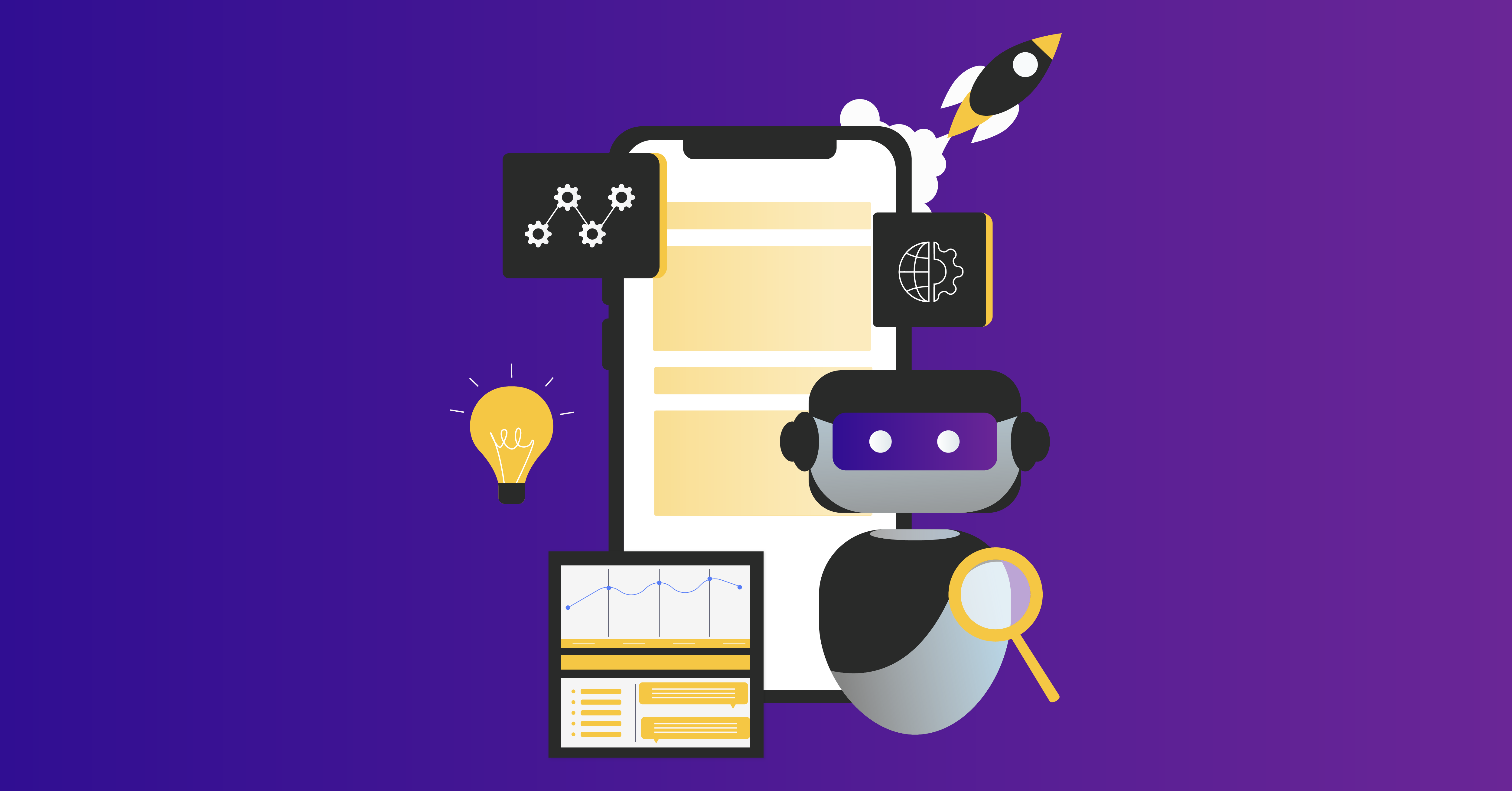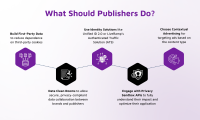What is Bot Traffic?- The Ultimate Guide to Types of Bots for Publishers
The virtual world is under siege, and the attackers are not your typical human cybercriminals. They are bots, and they are multiplying faster than ever before. With every passing day, their numbers grow, and their impact on the online ecosystem becomes more significant.
According to Statista, while human-generated website traffic still dominated 2021, there has been a constant rise in bot traffic. The bad bots amounted to 27.7% of web traffic, which is a 2.1% increase from 2020.
However, not all bots are created equal. While bad bots are a growing problem on the internet, there are also good bots that serve important purposes for publishers and it is best to keep them around. Awareness about bot traffic could help them enhance their website quality and boost their ad revenue.
What is bot traffic?
Bot traffic is a term that refers to any non-human traffic that visits a website. This traffic can come from a variety of sources, including search engine crawlers, web scrapers, and automated scripts. They are an inevitable presence on websites, regardless of their nature, whether new or old.
It is imperative to note that the term “bot” is often misconstrued to be inherently harmful; however, this is not always the case. Some bots are designed and developed to be malicious, and they negatively affect Google Analytics data. Such bots are known for their ability to engage in credential stuffing, and data scraping, and even launch a distributed denial-of-service (DDoS) attack.
Nonetheless, there exist bots that are essential to the operations of specific web services, such as search engines and digital assistants. As such, publishers must utilize their analytics data to differentiate between human behavior and the good, bad, and ugly of bot traffic.
Given that users engage in activities such as liking pictures online, retweeting messages, and upvoting comments, the amount of daily web traffic on the internet continues to rise. In light of this, it is critical to explore the different types of bot traffic and understand their functions.
What are good bots?
Good bots are a type of bots that are designed to perform essential functions on search engines, apps, and websites. Good bots typically follow the rules set by the website owners and provide users with relevant information, and perform other tasks that are useful for internet users.
What is good bot traffic?
Good bot traffic refers to automated traffic that serves beneficial purposes such as web crawlers used by search engines to index and rank websites, social media bots that help promote content and engage with users, and chatbots that provide customer service assistance.
Here are the types of good bots:
- Search Engine Bots
Search engine bots, also known as web crawlers or spiders, are automated software programs used by search engines to scan and index websites on the internet. They crawl through web pages, following links to gather information about the content and structure of sites. This information is then used to help rank the websites on search engine results pages. Search engine bots are considered “good bots” because they serve a legitimate purpose and are essential for website owners to get their websites listed on search engines.
- Monitoring Bots
Website monitoring bots, also known as uptime bots, are designed to continually check a website’s availability and performance. If the website goes offline or experiences technical difficulties, the monitoring bot will send an alert to the publisher and content creator aka the website owner or an administrator, allowing them to take necessary actions to address the issue promptly.
- SEO Crawlers
For publishers, improving the search ranking of their websites is a crucial task, but it can be challenging without sufficient information. SEO crawlers can assist in this regard, as there is a range of software available that can crawl a website and its competitors to determine their ranking and performance. Publishers can use the data gathered by these bots to enhance their search visibility and increase their organic traffic.
- Copyright Bots
A copyright bot is an automated web robot that crawls the internet to scan for specific media to ensure that copyrighted content is not being used without the publisher’s permission. With so many websites and users surfing the internet every day, it can be practically impossible for creators to ensure that nobody has stolen their property and used them without authorization.
A copyright bot comes in handy in this scenario by automatically detecting and notifying the owners of any potential copyright infringement. This helps website owners protect their intellectual property and ensures that their content is not being used illegally by others.
What is a bad bot?
As we have established, Bad bots are automated software programs that are designed to carry out malicious activities on the internet. They are often used by cybercriminals and hackers to steal data, commit fraud, and distribute malware.
What is bad bot traffic?
Bad bot traffic is any type of non-human traffic that is intentionally developed and designed to negatively affect a website. If left unattended, these bots can lead to severe damage, including harming a website’s reputation, damaging its search engine ranking, and even compromising sensitive user data. Therefore, publishers and content creators must remain vigilant and implement proper security measures to protect their sites against bad bot traffic.
Here are the types of bad bots:
- Web Scrapers
Web scrapers are a type of internet bot that automatically extracts data from websites. They can be used for various purposes, such as research or data mining, but they can also be used maliciously to steal content, images, and other valuable data from a website without the owner’s consent. Scrapers often use sophisticated techniques to bypass website security measures and extract data in large quantities, which can have negative impacts on website performance and security.
- DDoS networks
A DDoS bot, which stands for distributed denial of service bot, is one of the oldest and most dangerous bad bots. These bots are surreptitiously installed on vulnerable devices to carry out targeted attacks on specific websites with the intention of causing them to go offline. DDoS attacks have been notorious for causing significant financial losses to websites, often rendering them inaccessible for days at a stretch.
- Vulnerability Scanners
Vulnerability scanners are a type of bad bots that can be deceiving. They may appear to be good bots from a website’s server log but unfortunately, that’s not the case. There’s a range of malicious bots out there that scan for various vulnerabilities to report back to the owner. Instead of reporting these issues back to the users, these bots are specifically designed to report them to the malicious actors who are most likely to sell or misuse the information to hack the website.
- Click Fraud Bots
Click fraud bots are one of the most infamous bad bots in the advertising industry. They are specifically designed to mimic human behavior and click on ads, which can cause significant financial losses to advertisers by consuming their ad budget without generating any real clicks or conversions. Ad fraud is a serious problem for the online advertising industry, costing billions of dollars every year. Advertisers may pay for clicks or impressions that are generated by bots instead of genuine human traffic, resulting in wasted ad spend and a decrease in one of the most important success metrics- return on investment.
The world of bots can be a double-edged sword for publishers, as they can bring in valuable traffic while also causing harm to the website. To mitigate the risks of bad bot traffic, website owners must keep a close eye on their Google Analytics to identify the type of bots they are dealing with.
There are various measures that publishers can take to protect their websites from bad bots, such as implementing a web application firewall (WAF) or tools like reCAPTCHA to prevent bots from accessing their website’s content.
By using these protective measures, publishers can effectively manage bot traffic and ensure their website’s performance and integrity remain uncompromised.




Leave a Reply